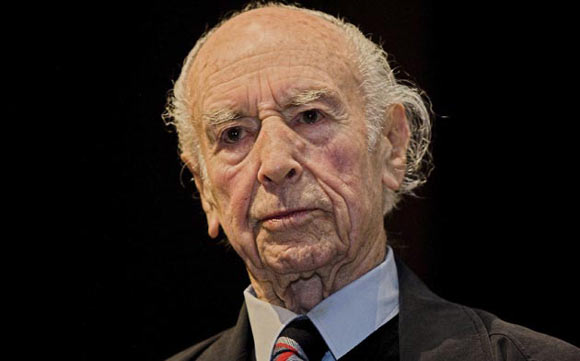Albert Hofmann invented “Lysergic acid diethylamide (LSD)”
Albert Hofmann was a Swiss scientist, best known for the invention of the psychedelic drug lysergic acid diethylamide, better known as LSD. He was born on January 11, 1906, in Baden, Switzerland where his father Adolf worked as a factory tool maker. Hofmann recalls having a pleasant childhood playing outdoors in the fresh air. This is when he developed a feeling of unison with nature which influenced his decision to study chemistry in later life. Although he came from a religious background (his father was a Catholic and his mother a Protestant), Hoffman did not agree with organized religion, but he was a spiritual person.
Hofmann’s godfather paid for his education as his own family was not very well off. He began studying Chemistry at the University of Zurich at the age of 20 and finished his degree three years later, working as a commercial apprentice for the duration. After graduating, Hofmann received his doctorate with distinction in 1929. He then started working at the pharmaceutical department of Sandoz Laboratories, which is now a part of the pharmaceutical giant Novartis. Here he conducted research on the chemical properties of medicinal plants, and to this end, he studied the properties of a plant known as “squill” and a fungus known as “ergot”, both of which he intended to use later to manufacture pharmaceuticals. Ergot became the key ingredient of LSD, although Hofmann was not to know this until much later.
Hofmann first created LSD in November 1938 and his intention was for it to be used as a stimulant to restore circulation. At the time he set it aside and did not realize the powerful substance he had created. It was more than 5 years later, on April 16, 1943, that he returned to it to conduct further research and experiments. During these experiments, Hofmann unintentionally came into physical contact with LSD and probably ingested a small quantity through his fingertips. Soon he began to feel slightly dizzy but energized and he suspended his laboratory work to go home. At home, he recalls how he saw fantastic images, colors, shapes, and light and dropped down in a state of pleasant stupor. Two hours later, when his thought process began to return to normal, he realized that he must have absorbed some of the LSD compounds by mistake. His curiosity was aroused and he decided to conduct a controlled experiment this time.
Three days later he took a dose of 250 micrograms and recorded the experiment in his journal. According to his notes, he felt dizzy, confused, and paralyzed and the visions he saw were decidedly frightening. He cycled home in that state, accompanied by his assistant. This day is now celebrated as “Bicycle Day” in memory of Hofmann’s first acid trip. Hofmann feared that he may have taken a fatal overdose so he asked his assistant to call the doctor. The doctor found no traces of poisoning and deemed him physically fit. Indeed, a few hours later, he did return to normal. Hofmann conducted hundreds of further experiments and considered LSD to be very useful in psychoanalysis. He also admits that there was potential for misuse but felt that it should not have been banned as there was also potential for good. There have since been several studies on LSD, including its therapeutic properties, and effects on our consciousness.
Albert Hofmann manufactured a range of other drugs as well, and was the first to create psilocybin which was the main ingredient in “magic mushrooms”. He continued to work at Sandoz laboratories, from where he retired in 1971 as head of the Research Department for Natural Medicines. He wrote several articles in scientific journals as well as many books. Hofmann died of a heart attack on April 29, 2008, at the age of 102.
